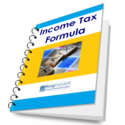Many of us have taken home loans / mortgages to buy our house. And one of the most important motivators for going in for a housing loan is the Income Tax (IT) benefits that it entails. This article explains in detail how a home loan saves you Income Tax.
These days, many young people are buying a house or an apartment of their own (and it makes perfect sense – please read “Settle early in life – buy a home when young” for an in-depth analysis). Most of them also take a housing loan (Also called a home loan, or a mortgage) to fund this costly acquisition.
But a home loan doesn’t just provide you the finance needed for buying your house. It also results in income tax saving year after year, for the entire tenure of the loan! To understand the income tax benefit of a home loan better, let’s first understand the Equated Monthly Installment, or the EMI.
Equated Monthly Installment (EMI)
When your home loan is sanctioned and disbursed, you receive a cheque for the entire loan amount (This cheque is in the name of the seller of the house, or the builder if you are buying the property directly from the builder).
This home loan is repaid in equal monthly amounts, which are called Equated Monthly Installments or EMIs. The EMI consists of two portions – the principal amount, and the interest for the home loan.
Through the principal portion of the EMI, you repay the loan in small bits every month. Thus, the outstanding loan amount (or the remaining loan amount) reduces every month by this amount.
Through the interest portion of the EMI, you pay the bank the interest on the outstanding loan amount.
Thus, when the loan starts, the interest component is very large, and the principal component is very small. Every month, the interest component becomes smaller than the previous month, and the principal component becomes larger than the previous month.
Over time, the principal component becomes larger than the interest component, and towards the end of the tenure of the home loan, the interest component becomes negligible.
To understand your EMI better, and to see this progression of principal and interest component of the EMIs, please download the “Home Loan Amortization Schedule Calculator”. (Please note that you need to be logged-in to download the calculator. Please click here to register for free – it takes less than a minute!
Income Tax treatment of Principal Repayment
And why did we discuss all this in so much detail? It’s because the Income Tax Act treats principal repayment and interest payment differently.
Section 80C of the Income Tax Act says that an amount up to Rs. 1 Lakh can be deducted from your income if it is invested in qualified instruments. These instruments include Provident Fund (PF), Public Provident Fund (PPF), life insurance payments, Equity Linked Savings Scheme (ELSS), etc.
And guess what? Also included in this list is Principal Repayment for home loans! Yes, thats right – and this means that principal repayment up to Rs. 1 Lakh is totally deductible from your income if you have not made any other investments under section 80C. (The total cap for Sec 80C is Rs. 1 Lakh – so, the combined benefit of all the investments under sec 80c can’t exceed Rs. 1 Lakh)
There is only one condition here – principal repayment can be considered as a valid investment under section 80C only if it is made for a self occupied house. That is, you should be living in the house for which you are making the principal repayment.
The only exclusion is if the house is not in the city in which you are working – in which case you can claim the principal repayment as an investment under sec 80C even if the house is not self occupied.
Example
If you work and stay in Mumbai, and have another house in Mumbai for which you are paying the EMI, you can’t claim the principal repayment under section 80c for this other house. But if you are working and staying in Pune, and have a house in Mumbai for which you are paying the EMI, you can claim the principal repayment under section 80c. This is true even if you have rented out the house.
Another important point is that there is no restriction on the number of houses for this benefit – the only restriction is that the house should be self occupied.
Thus, if you are working and staying in Pune in your own house for which you pay EMI, and have a house in Mumbai for which you are paying the EMI as well, you can claim the principal repayment under section 80c for both the houses as you are satisfying the “self-occupied” rule (with the allowed exception). This is true even if you have rented out the Mumbai house.
Income Tax treatment of Interest Payment
The interest you pay as the part of your EMI is considered an expense under the head “Income from House Property”, and is deductible up to a maximum of Rs. 1.5 Lakhs under Section 24 of the Income Tax Act.
The interest amount would appear as a negative amount under the head “Income from House Property”, and would thus be deductible from your total income under Sec 24.
Even if you have any other income from the house (like rent), that income would get reduced by the amount of interest paid.
The best part is that there is no restriction of “self occupied property” for claiming the tax break on interest paid under sec 24. In fact, if you have rented out the house, ALL interest paid (even if it is more than Rs. 1.5 Lakhs) is deductible from the rent received.
And remember, just like the principal repayment, there is no restriction on the number of houses for this benefit – the only restriction is the limit of Rs. 1.5 Lakhs. Thus, if you are paying the EMI for 3 houses, you can claim interest paid for all the 3 houses under Sec 24 as long as it doesn’t exceed Rs. 1.5 Lakhs.
Pre-EMI Interest
The bank may disburse a partial amount to you / builder depending on the stage of construction of the house. In this case, you do not pay an EMI, but instead, pay a pre-EMI interest.
You can not claim any income tax benefit on this pre-EMI interest in the year you pay it to the bank.
Pre-EMI interest can be claimed in 5 equal instalments after the construction of the house ends. That is, it can be claimed in 5 equal instalments starting from the FY in which the construction of the house ends and you get its possession.
This pre-EMI interest should be claimed along with the interest component of the EMI under section 24. The overall limit remains Rs. 1.5 Lakhs even in this case.
Example
Let’s say you pay Rs. 20,000, Rs. 30,000 and Rs. 30,000 as pre-EMI interests in years 2003-04, 04-05 and 05-06 respectively.
Now, say you get possession in 2006-07. Then, you can claim Rs. 16,000 (A fifth – or 20% – of Rs. 80,000, which is the total pre-EMI interest paid by you) per year from 2006-07 to 2010-11.
Are you paying EMIs before getting possession of the house?
Many banks actually disburse the full loan amount even if the construction of the house is not complete. In this case, you start paying the EMIs straightaway. What happens in this case?
Here, you do not get any income tax benefit on the principal amount for the EMIs that you paid before getting possession of your house (as principal component can be claimed only after you get possession of the house).
As discussed earlier, you can start claiming the income tax benefit of the principal amount u/s 80C starting from the financial year in which you get the possession of the house.
The interest component of the EMIs that you paid before getting possession of your house should be treated similar to pre-EMI interest (as explained above).
Thus, you should add up all the interest that you paid through EMIs before you got the possession of the house, and start claiming 20% of it each year (for 5 years) starting from the financial year in which you got the possession of the house.
Home and Home Loan in Joint Name
If you have taken the home loan in joint name, the tax benefit (for both principal repayment and interest paid) would be available to both of you if the house is also in joint name.
The tax benefit is available in the ratio of EMIs paid – thus, if person 1 pays 40% of the EMIs, and person 2 pays 60% of the EMIs, the tax benefit would also be available in the proportion of 40% & 60%.
(Please also read “Advantages and disadvantages of home loan in joint names“)





